Royal Mail to Plate
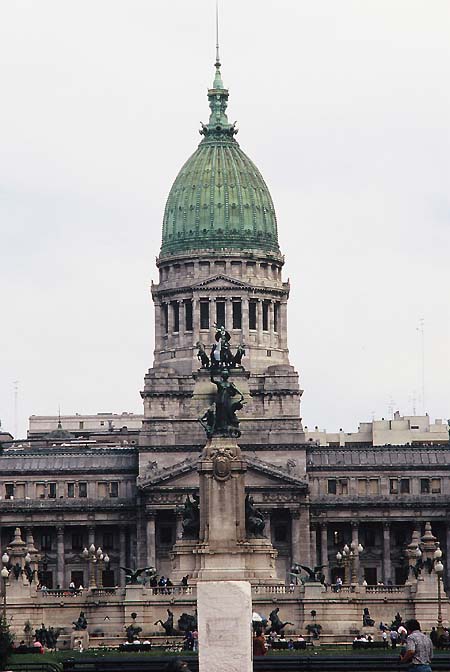 Buenos Aires, Congress (WS)
Buenos Aires, Congress (WS)
Royal Mail
The Pacific Steam Navigation Co. (PSNC) of William Wheelwright and the Royal Mail Steam Packet Co. (RMSP) , founded by James McQueen, were initially engaged in the Caribbean traffic - see chapter Caribbean. McQueen had explained his idea of a Royal Mail line of steamers as early as in 1830 in his Glasgow Courier (as Campbell Mc Cutcheon pointed out in a comprehensive report in Ships Monthly, May 2007). Almost a century later that Royal Mail company was to become the mightiest shipping firm of the World.
Based on an agreement with the Admiralty, a route from Southampton to the capitals Rio de Janeiro and Montevideo was opened in 1851 with the "Teviot". In the same year a British mail contract for services to Argentina was granted. Thus the RMSP became the leader on that 'River Plate' route to Argentina's capital Buenos Aires, the most important on the South Atlantic. In the 1850s the itinerary ran Southampton - Madeira - Tenerife - Pernambuco - Salvador de Bahia - Rio de Janeiro - Montevideo - Buenos Aires. In 1880 the RMSP resumed departures from London and in 1884 a service Santos - New York was added, but it was abandoned after the loss of two ships. Santos is the port for Sao Paolo, since 1867 connected by a broad-gauge railway with a funicular system (and from 1896 a second one) to ascend the Serra do Mar range.
At the end of the 1880s the fleet became modernized by introduction of the second "Atrato" (1889 / 5,633 gt) and consorts, RMSP's first liners not being equipped with auxiliary sail. In 1903 Owen Philips, later to become Lord Kylsant, took over the chairmanship of RMSP. Under his presidency the engagement in the Orient-Pacific Line ceased in 1909 - see chapter Indian Ocean/Australian Mail. The South America traffic however was substantially improved with the new 'A' class of passenger steamers, beginning with the "Aragon" (9,588 gt) of 1905, followed by other consorts of this single-funnel class. With a larger version the size rose to c. 16,000 tons. The RMSP group expanded by acquiring the Shire Line in 1911, the Elder Dempster Line in 1912 and it took also a substantial share in the Union-Castle Line.
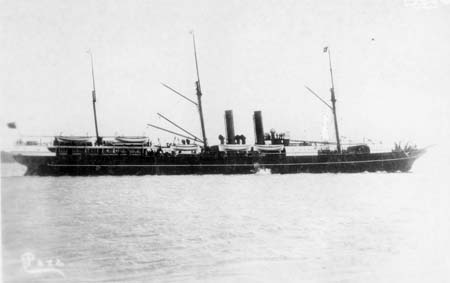
"Para", RMSP (old card, coll. WS)
|
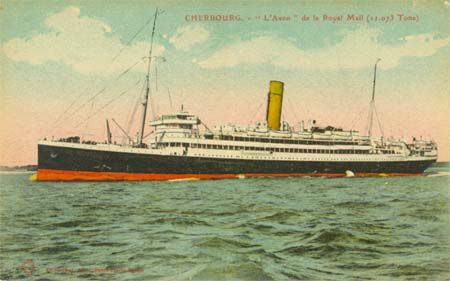
"Avon", RMSP, at Cherbourg (old card, coll. WS)
|
Pacific Steam Navigation (PSNC)
The PSNC operated towards the end of the 19th century, apart from Caribbean services, on the main route Liverpool - Lisbon - Cape Verde Islands - Pernambuco - Bahia - Rio - Montevideo - Punta Arenas - Talcahuano - Valparaiso. Cook's timetable gave the additional information: "West Coast ports per coasting steamer". Courageous travelers could avoid the long way through the Magellan Strait by taking the overland route from Argentina to Chile, crossing the Andes by horse or stage coach. This route was ameliorated with completion of the Trans Andine railway, officially Ferro-Carril Trasandino, in 1910. In the same year PSNC was purchased by the RMSP. Opening of the Panama Canal on 15th August 1914 (see chapter Pacific / Via Panama) shortened traveling time to the West Coast substantially. The PSNC liners Liverpool - Valparaiso were re-routed via Panama, while RMSP ceased Caribbean operations in 1920.
Expanding Royal Mail
After WWI, RMSP started to introduce motor-ships. In 1926 the company put world's largest motor-ship, the "Asturias" (22,048 gt) into service on the River Plate route, to be followed in 1927 by the "Alcantara" (22,181 gt). These modern ships featuring the two buff-coloured stumpy funnels (one was a dummy) had been built by Harland & Wolff at Belfast and Lord Kylsant became chairman of that famous shipyard. His success story reached its peak when he acquired the White Star Line at the end of 1926. However, the depression of 1929 led to the collapse of world's biggest shipping group. In 1931 Lord Kylsant's empire was disintegrated, he was sentenced and ended his career as a broken man.
Competitors
RMSP was not ruined by its competitors but by over-extension. Nevertheless there were also other British companies competing in the South Atlantic business. The South American & General S.N.Co. appeared in 1853 as the earliest operator of screw steamships on the South Atlantic. In 1856 the Union Company, engaged in the Africa trade, opened a Southampton - Rio de Janeiro service, but abandoned it in 1857. The earliest steel ship on the South Atlantic had been the 4,000-ton "Buenos Ayrean" of 1879, employed by the Allan Line. Shipping between England and the Amazon region was started in 1882 by the Booth Line. Their ships connected Liverpool even with Manaos and more remote ports on the River Amazon.
After WWI Lamport & Holt and Nelson S.N.Co, traditional operators on the River Plate route, had come under control of the RMSP. The Lamport & Holt Line, primarily engaged in cargo shipping, has inaugurated their first fast passenger-cargo service between Livrpool and Argentina in 1911 with the "Vandyk" and the "Vauban" (1912/10,680 gt). Lamport & Holt served also Rosario on the Parana and the West Coast via Chile. Expelled by the influence of the RMSP, the ships with the blue/white black-topped funnel were relocated to the existing New York - Buenos Aires route. When the "Vestris" capsized in 1919 on the South America route, passenger services were abandoned.
The Nelson Steam Navigation Co. employed a fleet of 7,000-ton passenger-cargo vessels on the River Plate route. Between 1928 and 1930 half a dozen new 'Highland'-class ships have been introduced. They were motor ships of c. 14,000 tons with a grey hull and two short funnels in the red house colours. In 1968 passenger transport was closed down.
A newcomer, the Blue Star Line, entered the passenger-cargo business on the river Plate route in 1927 with the "Almeda". It was the first of the 12,000-ton 'A' class vessels. These steamers with the two red funnels, sporting the company's blue star, did not survive WWII. Still in the '60s more modest passenger-cargo ships were employed between London and Buenos Aires.
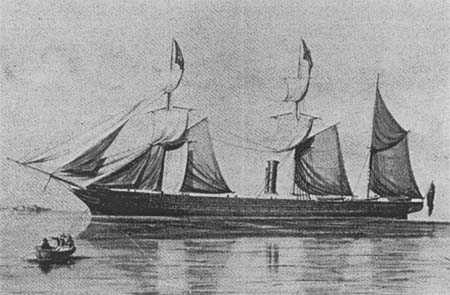
"Brazileira" of the South American & General S.N.Co. (National Maritime Museum/ V.Gibbs)
|
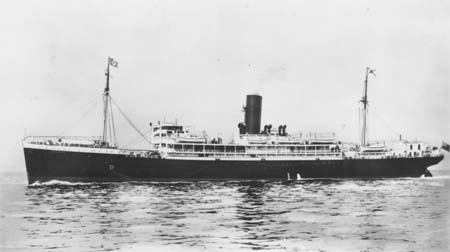
"Hilary" of Booth Line (old card, via Wikimedia)
|
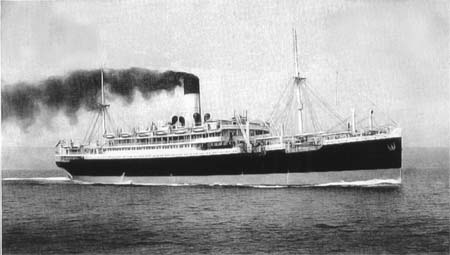
"Vestris" of Lamport & Holt (via Wikimedia)
|
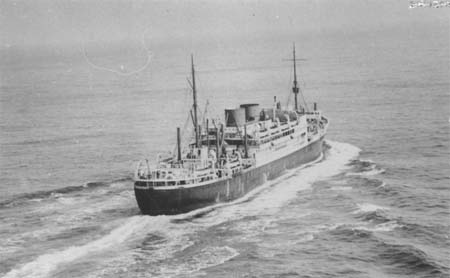
"Highland Brigade" of Nelson SNCo, after takeover by RMSP (old card, coll. WS)
|
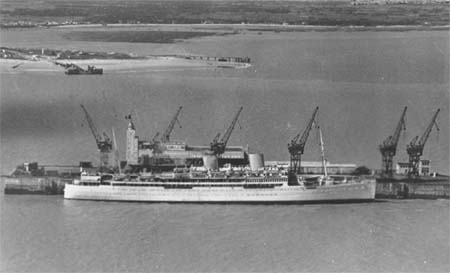
"Reina del Pacifico", PSNC, at La Rochelle 1959 (old card, coll. WS)
|
|
Royal Mail Lines
After the collapse of the RMSP, its direct successor Royal Mail Lines was formed in 1932. The motor ships "Asturias" and "Alcantara" were converted to steam propulsion and fitted with Parson turbines. In 1937 the keel was laid at Harland & Wolff for a beautiful new steam-turbine powered liner, the 26,689-ton "Andes". She was launched in March 1939 and the maiden voyages should have taken place in September. However, as WWII had broken out, she entered service as a troopship.
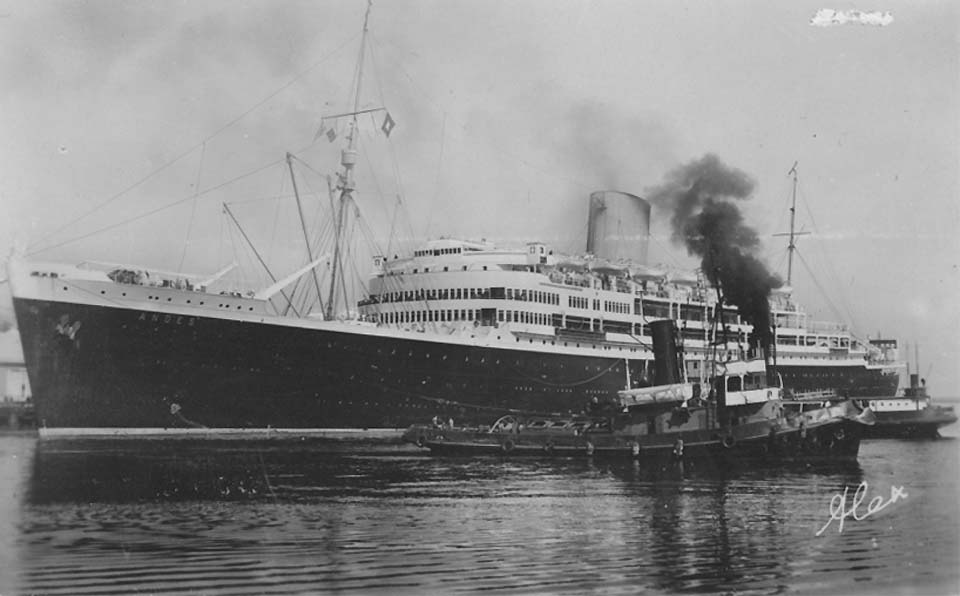
"Andes", Royal Mail, at Cherbourg (old card, coll. WS)
The End
After WWII regular South America services were resumed. The refurbished "Andes" had her first voyage in 1948 from Southampton to Buenos Aires, where she was welcomed by President Peron. A newbuild, the "Magdalena" of 1949, sank on her first return after hitting a rock. The "Andes" underwent conversion for cruises and entered that service in 1960, reappearing in white livery. In the same year the 20,000-ton passenger-cargo vessels "Arlanza", "Aragon" and "Amazon" were introduced on the River Plate route, but it was too late for a success. In 1965 the company became acquired by Furness, Withy & Co., the "Andes" was cut up in 1971 and one year later the Royal Mail Lines had disappeared. Historian McCutcheon concluded: "It was a somewhat sad end for Britain's first major shipping line set up for the express purpose of carrying the Royal Mails to far flung outposts of the Empire".
Concerning the Falklands, one of the last outposts, Thos. Cook Overseas Timetable noted e.g. in 2008: "A monthly (or better) cargo/passenger service connects the Falklands with the UK". Cargo shipping is dominating the South Atlantic...
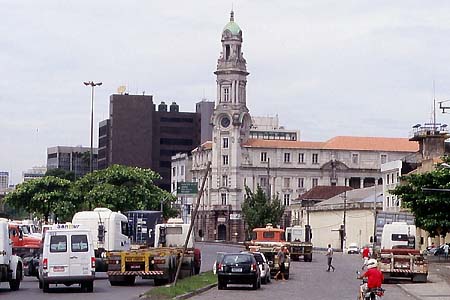
Santos, the old Bolsa Official de Cafe (WS)
|
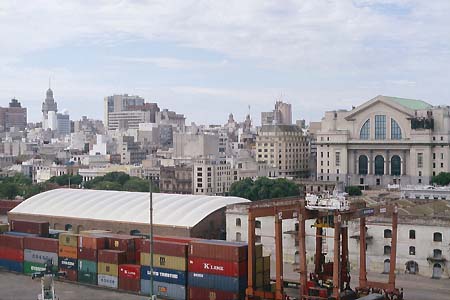
Montevideo port (WS)
|
|